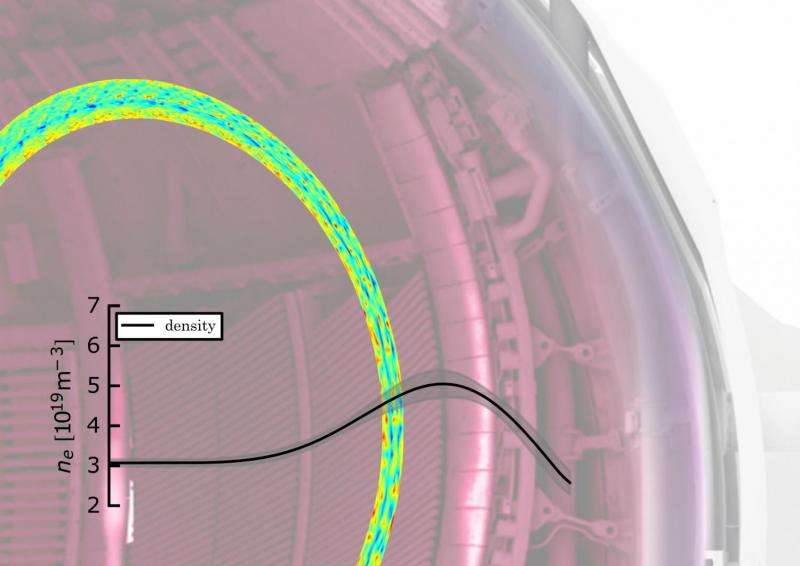Turbulent transport of hydrogen fuel in fusion plasmas

Using large-scale computer simulations, the Plasma Physics and Fusion Energy research group at the Department of Earth and Space Sciences is making important contributions to Joint European Torus (JET), the biggest fusion experiment currently in operation. The simulations provide information about plasma turbulence and transport of plasmas that would be impossible or too expensive to study experimentally.
The Plasma Physics and Fusion Energy group is involved in several international projects with the aim of realizing fusion as an energy source. The research is mainly done in collaboration with the Joint European Torus (JET), the largest fusion experiment currently in operation, and is focused on the preparation for the start of the experimental fusion reactor ITER that is being built in Cadarache, France. One of the current projects is focused on understanding how the hydrogen nuclei taking part in the fusion reaction can be replenished by injection of hydrogen pellets.
JET is uniquely suitable for the study of ITER issues because of its size and since it shares many features of the ITER design such as a metallic (beryllium and tungsten) wall and tritium capability. The Chalmers research group uses data from JET experiments in order to run large scale computer simulations of the plasma turbulence and the associated transport of particles and energy.
"These numerical experiments let us study the turbulence at a level of detail which is not possible in the actual experiment. We also look at the impact of changes in plasma parameters that would be impossible or too expensive to study experimentally. The tool we use for this is the GENE code, a so-called gyrokinetic code that evolves the particle distribution function in five space and velocity dimensions," explains Daniel Tegnered, PhD student in the Plasma Physics and Fusion Energy group.
One of the crucial issues for ITER is how the plasma refuelling should be achieved. Particles of the plasma will unavoidably be lost, both to the wall, since the particle confinement will not be perfect, and also through the fusion reactions themselves which consume hydrogen nuclei. This makes continuous fuelling of the plasma a necessity. For ITER, so-called pellet fuelling is foreseen, whereby pellets containing appropriate hydrogen isotopes are injected at high speeds into the plasma. However, the pellets will not be able to reach the central part of the plasma with the highest densities and temperatures before being ablated. This will perturb the plasma's temperature and density profiles, causing a "bump" in the plasma density as shown in the image. These particles must then be transported inwards by diffusion and convection caused by the turbulence.
"Our simulations of pellet-fuelled JET discharges has shown that the turbulence under certain conditions can be stabilized in this region due to the "bump" in density and temperature," says Daniel Tegnered.
Further simulations of conditions more similar to ITER has also shown that a higher ratio of plasma pressure to magnetic pressure, a parameter important for the economic viability of future fusion reactors, also serves to stabilize the turbulence in this region. This in turn reduces the inward particle flux, potentially making pellet fuelling less efficient. Further analysis and simulations of ITER-like JET discharges will be crucial for the successful development of plasma scenarios for ITER.
More information: Gyrokinetic simulations of transport in pellet fuelled discharges at JET. ocs.ciemat.es/EPS2016PAP/pdf/P2.009.pdf
Provided by Chalmers University of Technology





















